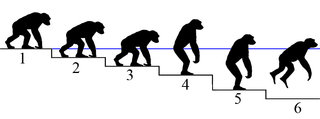So does a zombie.And yet it moves.
RationalWikiRationalWiki said:There are several problems with this idea. The first is that convergent evolution predicts adaptations serving similar function, not necessarily similar structure. A platypus bill looks like a duck bill because it solves the precise same problem (sucking bugs out of mud); but the wings of a bat, a bird, and a bumblebee are products of convergent evolution in solving the problem of flight, but are structurally very different. Morgan's convergent evolution adaptations focus on structure.
The second problem is that evidence provided for the AAH is equally well accounted for by savanna-based adaptations without needing to posit an aquatic phase of human development.
A third major problem is there are actual characteristics indicative of aquatic mammals which humans notably lack. Aquatic mammals are testicond and have internal testes to insulate the gonads; humans are not testicond. Aquatic mammals also store large amounts of oxygen in the blood rather than the lungs; a trait lacked by humans.
- Loss of body hair: lower parasite load and maintenance through sexual selection. Furthermore, many aquatic mammals have actually kept their body hair.[12] Several other savanna species have also lost much of their hair including elephants, rhinoceroses, and naked mole rats. Although it is interesting to note that both elephants[13] and rhinoceroses[14] are theorised to have evolved from aquatic ancestors so they may not be the best counter-examples, though the only modern rhinoceros that spends much of its time in the water is the hairy rhinoceros.
- Diet: the fatty acids for the brain were present in sufficient quantities on the savanna.
- Diving reflex: terrestrial mammals show this too; there has been insufficient study of other apes to use this as evidence that humans are special in this regard.
- Body fat: distribution is similar to that of other primates.[citation needed] The quantities seen in present-day humans accord with those seen in domesticated mammals, i.e. we're quite well fed compared with wild dumb beasts. Humans have relatively more fat below the waist which serves as insulation when wading. [15]
- Bipedalism: the AAH compares humans to quadrupeds, but we went from quadrupedal locomotion to brachiation; bipedalism follows quite readily from that.
- Descended larynx: again, speech. The human larynx is not shaped like that of aquatic mammals, and descended larynxes are also seen in dogs, pigs, goats, monkeys and young chimps.[citation needed]
- Nose shape: again, speech. Speech was rather important in human development, oddly enough.
- Sebaceous glands: not actually found in aquatic mammals. Appear to be sexually dimorphic (highly active in adolescent human males, scent receptors highly active in adolescent human females).
- Swimming: humans really aren't that good at swimming. Dogs and cats do about as well.
The Aquatic Ape Hypothesis cannot easily explain why these features were maintained after our ancestors supposedly left the water and moved to savannas. [16]
Further, there's good evidence that many of the traits claimed to fall under the umbrella of the aquatic ape hypothesis evolved at radically different points in human evolutionary history. Fossils from 4.4 mya display bipedalism, while still possessing small brains long after, and not evolving sparse body hair until later still.
One of the largest problem with the hypothesis is that since the 1960s, rather than improving and gathering evidence, the hypothesis has become more nebulous and vague. Rather than some specific aquatic phase, modern aquatic ape hypothesis supporters cite anything from fresh water millions of years ago, salt water habitation more recently, several different aquatic phases or a general proximity to water to a greater degree than other apes. Incidentally other apes and even some monkeys sometimes gather food from water and may stand bipedally to do this.[17][18]
There are also anti-science objections lodged against the creation of the hypothesis because Morgan had the idea first and then simply found differences between humans and other apes and composed ad hoc reasons associated with water. One could cherry pick data for many such pet theories without any merit behind them, while making them sound good on paper.
Last edited:




